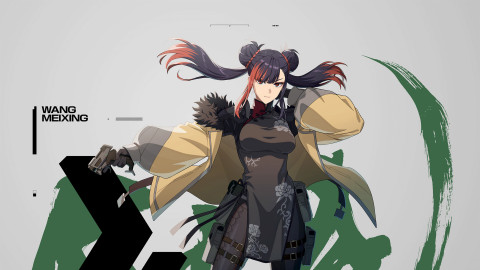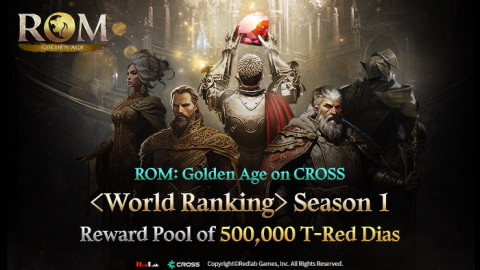
Developer: Ubisoft
Publisher: Ubisoft
Platforms: PS4, Xbox One, PC
Released: February 14, 2017
MSRP: $59.99
Although I haven’t been in the closed beta, I’ve played For Honor consistently since the open beta. I admit that despite how much I’ve played, I still mess up my combos and frequently get my head chopped off. Still, For Honor has a peculiar charm that kept me hitting the respawn button. Despite many people saying that I should wait a couple days for Ubisoft’s brand-new franchise, I decided to go against their advice and purchased the game.
First and foremost, some full disclosure: I enjoy the nerve-wracking anticipation and cutthroat competition of fighting games. I do rage and sometimes punch holes in the wall when I get completely blown out of the water, but again and again, I am drawn back by the competitive nature of the genre. For Honor also clicked with me because of the way the game faithfully recreates warriors from their respective history, instead of taking a more exaggerated, fantasy route. I felt like I was a medieval knight locked in fierce conflict.
With the official launch of the game, For Honor now features a story mode. I have a hunch that fighting game enthusiasts will look favorably upon the game; it may even evolve into a full-blown eSport if enough people are interested. Although I believe For Honor will be a hit or miss for many gamers, I urge you not to be intimidated by the premise. Even if you think you have zero talent when it comes to fighting games, For Honor provides plenty of fun.

▣ Story Campaign: An extended tutorial or a grueling challenge
I had high hopes for the campaign, which works similarly to a co-op mode and serves as both a learning ground for characters and a chance to challenge yourself. With the exception of a few special characters, players will follow the story that proceeds from Knights to Vikings, and then to the Samurai.
For most people, playing on easy or normal will be enough to get a grasp on the characters’ basic controls and systems. However, playing on hard or Realistic (the hardest difficulty) makes the campaign considerably more challenging.
On Realistic, players can only rely on the enemy’s motion for dodging and parrying attacks, since the UI for guarding isn’t there to show which way the attacks are coming from. I was able to deal with Raider’s more obvious attacks like “ÉG RÍF ÞIG Í BITA”, but as soon as faster characters like Orochi start their blade dance, I was as good as dead. As it turns out, recognizing attacks and actually being able to react to them are two different things.

The difficulty is more manageable on hard because of checkpoints and the aforementioned UI, but dying on Realistic will set you back to the beginning of the stage. If you’re the type that thrives on unforgiving environments and permanent-death challenge modes, For Honor has got you covered. Actually, I myself started out on Realistic, but scaled down to hard after being repeatedly ravaged and mutilated by wolves and superior AI enemies.
If you were expecting a deep, engaging story about chivalrous knights in search of glory, or a tale of vikings chanting Odin’s name as they pillage, then you may want to lower your expectations. Frankly, they’re all bloodthirsty psychopaths at best. As I was playing through the campaign, I kept thinking to myself none of these characters would be sane enough for modern society. A side note: all the factions seem to share a peculiar affection for wolves.
It would be a shame to skip the single-player campaign just because of the incoherent writing though. The way the campaign flows naturally with the combat is enough to warrant a playthrough. It’s just that the story is not the most relatable I’ve seen in video games. Realistically speaking, the campaign on the lower difficulties is nothing more than a tutorial for the characters. That being said, it’s still a good enough investment of your time since it has some various challenges. Playing on the hardest difficulty will be more interesting and satisfying, but it can be more taxing on your psyche as well. The game also gives out handsome rewards for completing the story mode, so it’s difficult for me to not recommend it.
▣ Multiplayer: Get good or get punished

At its heart, For Honor is a multiplayer game. Various game modes like dominion, elimination, and duel provide a unique flavor and twist to the game. There are also daily orders to play against AI, so if you’re not ready to face real humans, it’s good to know that there’s an alternative option.
Playing against other people is quite intense since 1v1 duels are all about individual talent, as is the case in all other fighting games; you either “git gud”, or die trying. Those who have played since the closed beta are more experienced with positioning, parrying, unblockable combos, guard breaks, and feints. On the other hand, newcomers will be thrown to the wolves to fend for themselves in a harsh arena, until they eventually figure things out. The only thing to look out for is a not-so-honorable backstab. Everything else is pure skill.
The essence of combat is actually quite simple. Players can attack and defend in three directions: left, right, and up. You block incoming attacks with the corresponding direction and try to strike or retaliate in a direction that the enemy isn’t blocking. All attacks and special abilities consume stamina, and exhausting all stamina makes you fatigued, greatly reducing all movement.

Additionally, players can mix in guard breaks, unblockable combos, parries, and feints to gain the upper hand and achieve victory. Guard break and unblockable combo are pretty self-explanatory. Parry will cause a short delay in the enemy’s assault, making time for a counterattack, while feinting an attack can make it harder for the enemy to guess which direction the attack is coming from. There are mechanical differences for each character, but the basic system is the same throughout.
Although there aren’t many difficult combat techniques aside from light/heavy attacks, a few combos, feint, and parry, it’s how you mix and match these abilities that makes the most difference. That’s why the game has a noticeably high skill gap between those who understand the mechanics and those who just mash buttons. My perception and experience regarding the matchmaking leaves much to be desired, because I feel like I’m always matched with someone who’s clearly more skilled.
The server issues that people brought up in previous beta tests have stabilized quite a bit, but I was still disconnected from time to time. There were sometimes other issues as well; sometimes, not all of the people in my group can join the game or the enemy gets disconnected and replaced with an AI. The latter problem is annoying because the AI is actually very capable and comes back after killing the human opponent. My usual reaction in such cases involves yelling out, “come on, really!?”


▣ Make Ubisoft Great Again: A condensed fighting-game experience at its finest
Whether it’s team-based or individual, For Honor is, at its core, an action game about duels. The experience is highly streamlined, from getting into a match all the way to the snappy round duration. Using the surroundings to one’s advantage, like through executing and pushing the enemy off of a cliff, also maximizes the thrill of victory. In team-player mode, For Honor adds another layer of gameplay by incorporating character abilities, map elements, and buffs.
I’m still not that good at the game, but that doesn’t change the fact that it feels thoroughly satisfying to defeat an opponent of similar skill. Specifically, I can’t say enough good things about the euphoria I experience after making a comeback with Revenge Mode when outnumbered. I think the developers understood what works in fighting games and masterfully focused on those aspects.

Aside from the uninspiring campaign story, the only other downsides are server issues, character balance, loading time, and the awkward controls on a gamepad; I must admit that’s quite a few. I hate to bring up balance since the game is relatively new, but I often shake my head in disgust when I’m pummeled by blazing fast headbutts or cheap shots followed by shoulder attacks. I only bring up the server issues because they’re critically detrimental to the enjoyment of the game. With stable servers, improved matchmaking, and reduced loading time, the game will perhaps see many more entertaining matches.
Even though there isn’t much content outside of combat, I still enjoy other aspects of the game such as collecting steel to expand territories and creating custom emblems. In fact, I’ve spent a good chunk of playtime working on my emblem. Sometimes I’ll encounter other people’s emblems and see references to Heroes of the Storm or even Internet Explorer; seeing stuff like that while I await an impending onslaught reminds me to take it easy and have fun. As such, For Honor may be the first casual fighting game that doesn’t compromise the genre’s core values.
That said, losing is not always a stress-free experience. Due to the nature of the gameplay, there will be some barrier to entry, as well as some frustration that goes along with it. Still, I believe For Honor remains as one of the most accessible games. You keep getting stomped? Well, it’s probably time to revisit the tutorials and hone your skills against some AI. As with any other game, I highly recommend playing with friends. Regardless of skill level, messing about with a couple of buddies will definitely reduce the stress and pressure to win. Just make sure that everything that happens in the game doesn’t carry over to real life.
People will either love or hate the game. Some say we should give some time for the hype to settle, but I’m happy to report that it’s a competent sword-fighting game that’s easy enough for me to play. I sincerely hope that Ubisoft continues support For Honor to prevent it from becoming a game that only a small group of elite players will continue to play.




Sort by:
Comments :0







